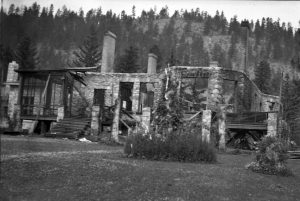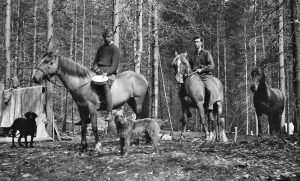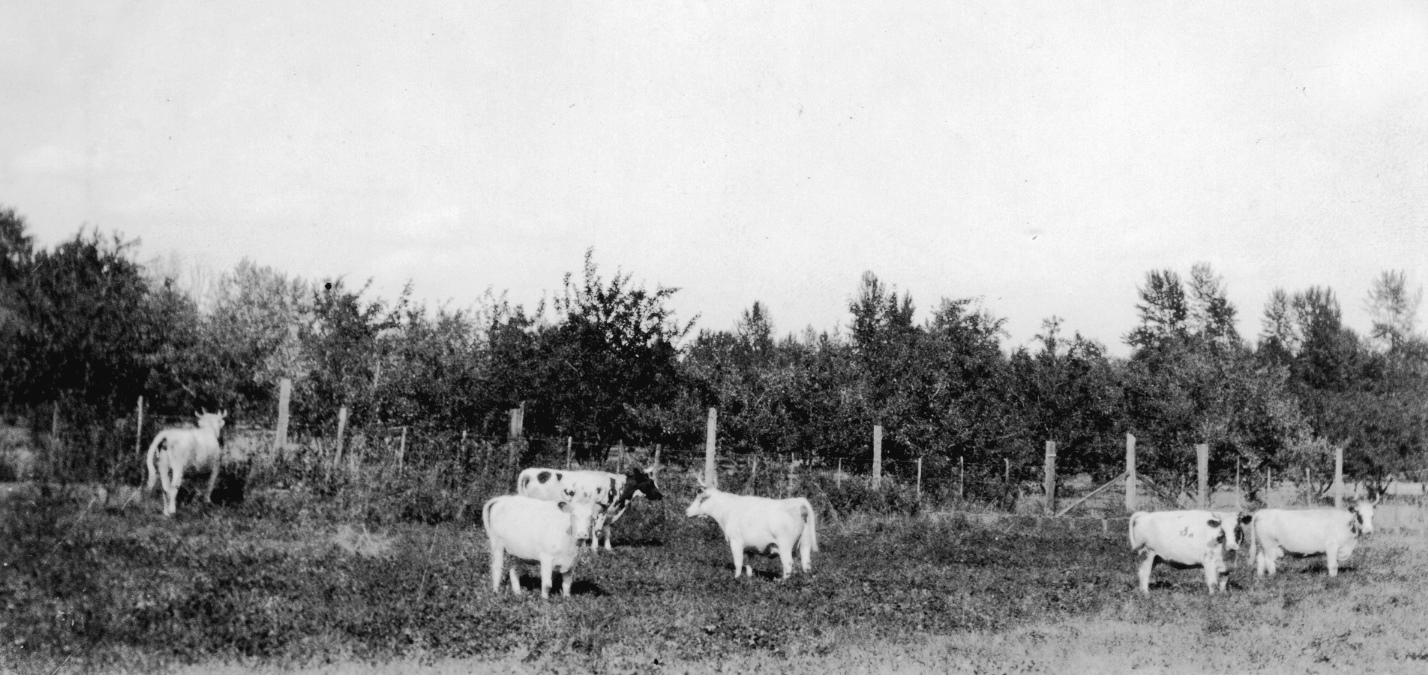A Difficult Year
1924 was a difficult year. Dun‑Waters’s beloved wife Alice died in May. Shortly after, the Manor House burned down. The foundation walls remained intact, so Dun‑Waters rebuilt and moved back in, with his friends the Stuarts for company.
Dun‑Waters turned to his hobbies and spent even more time in the hills hunting and exploring. He built a covered curling rink near the barn complex and brought his curling team to games throughout the Okanagan. He expanded the farming operations. This same year Dun‑Waters decided to bring in a full herd of dairy cattle and again contracted architect John Honeyman to build a dairy barn.
Dun‑Waters chose the Scottish Ayrshire breed as an experiment, to see how they would adapt to the Okanagan Valley. The southern region of the Okanagan Valley is considerably drier than the northern part. The cattle kept in the south are usually beef breeds, while dairy cows are more common in the greener pastures of the north. Fintry is located in the middle, so success with both types could be expected. With Ayrshires, Dun‑Waters was on familiar ground, and knew Ayrshire owners and their methods in both England and Scotland. Initial inquiries and trials took place as some good quality Ayrshire cattle were available from Quebec. The Ness family of Howick Quebec had experience importing Ayrshires to Canada and were well-known to the Scottish breeders. Canadian dairymen had been the leading buyers of export-quality Ayrshires for several years, and James Dun‑Waters had good precedence for his planned dairy at Fintry.




